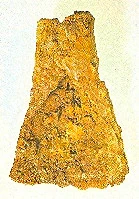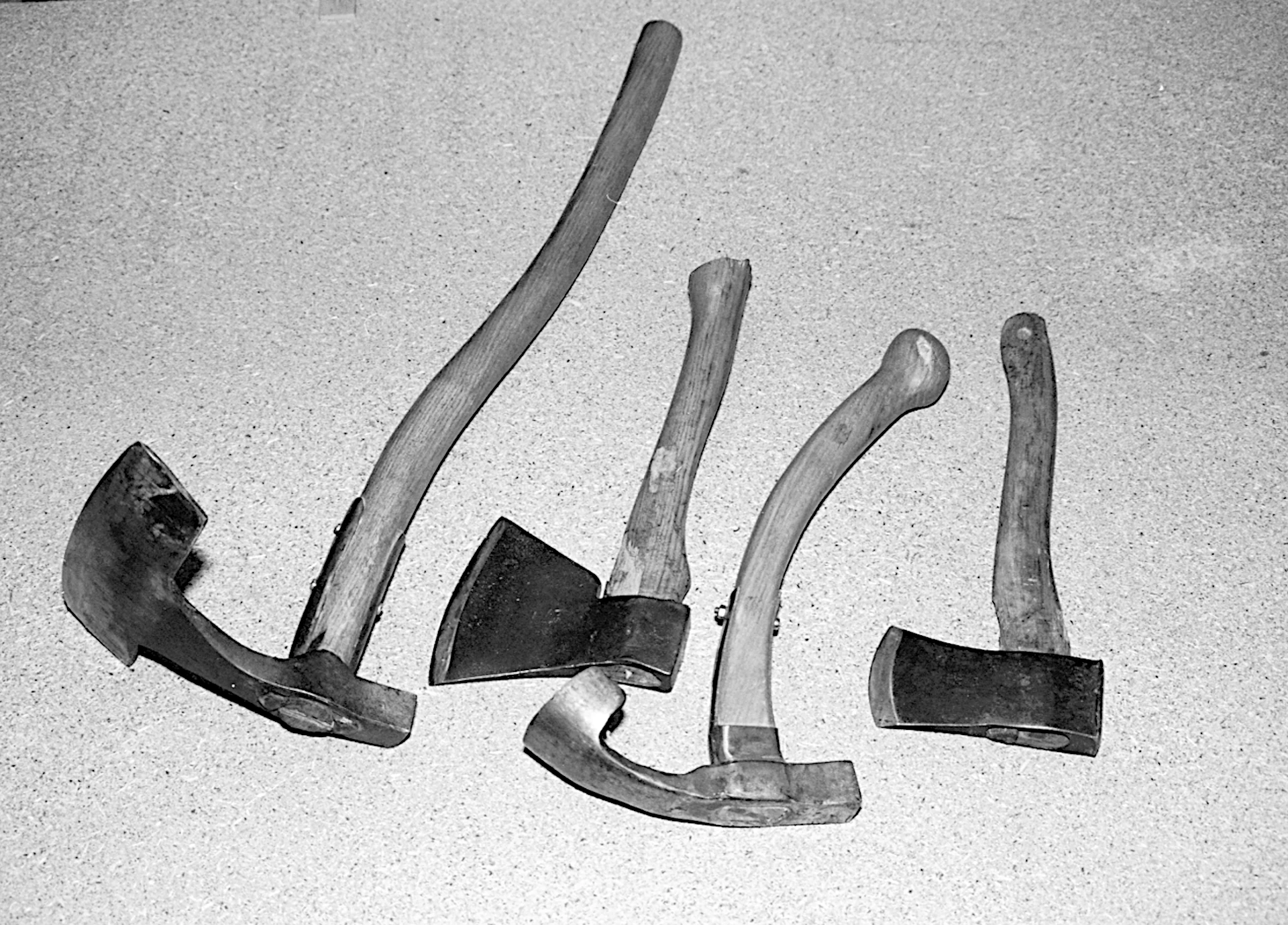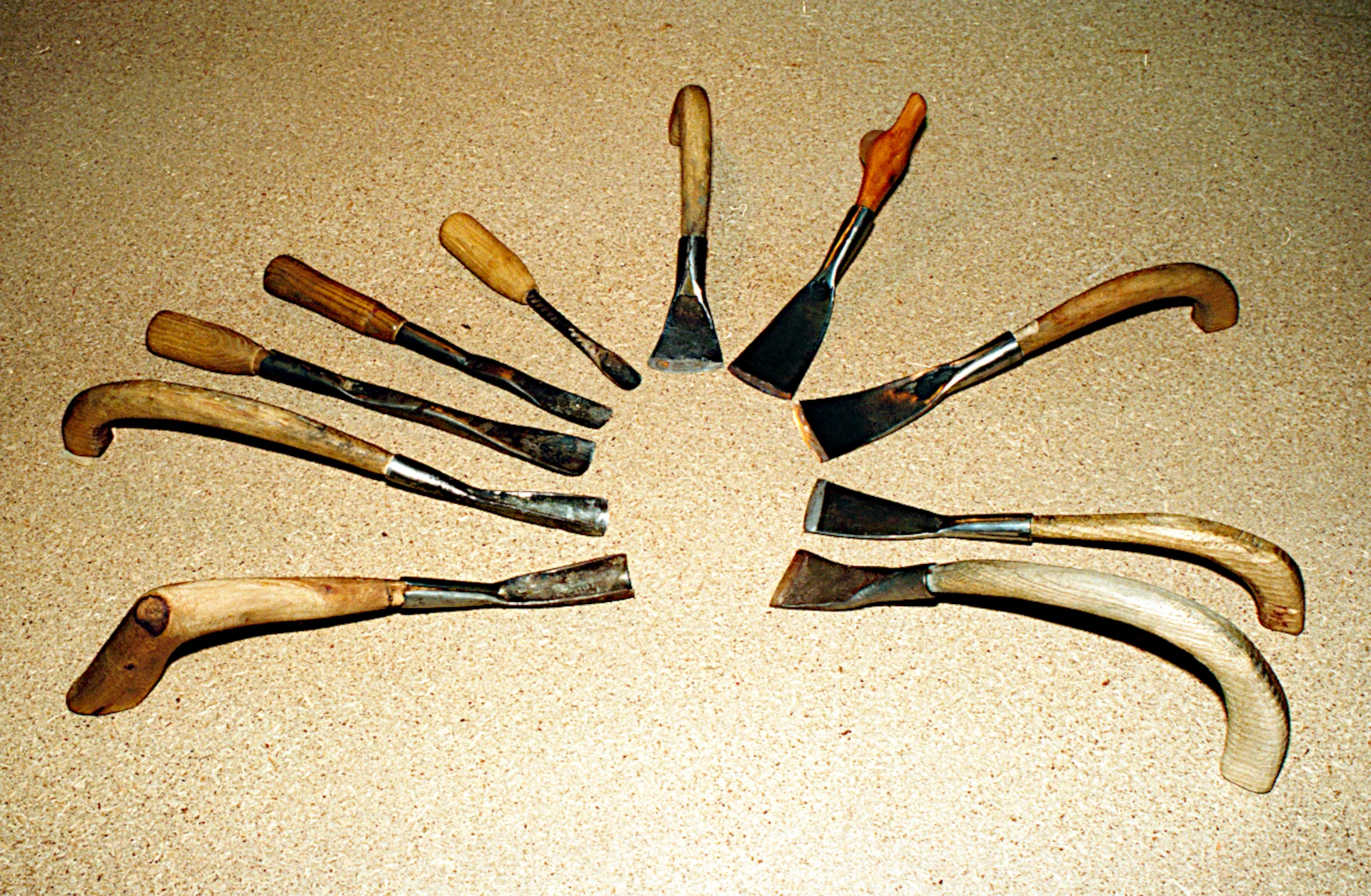Axes
For splitting the logs, steel wedges and Club hammer were used. Slim beechwood wedges with a top angle of 15º were also used when the steel wedges had opened a large enough gap.
Ordinary straight axes, both large forest axes and smaller axes, were used immediately. The axe angle was adapted to linden wood, 25º.
The statutes stated that contemporary tools should be used as much as possible in the construction of the boat. However, finds of tools from the Celtic Iron Age are very scarce in Scandinavia.
The tool group therefore worked on the philosophy that in a craft like woodworking in boat building, tools have largely only changed with the advent of new tool materials. Accordingly, the group started with tools used for boatbuilding in the nineteenth century. Through literature studies, they then sought to identify similar tool designs from times as close as possible to the Celtic Iron Age.
Finds in Denmark from the Roman Iron Age contained several tools that seemed relevant to shipbuilding, tools such as axes, azdes and chisels.
In the rest of Europe, tool finds were frequent, especially in the Celtic settlements north of the Alps. As craftsmanship and trade were well developed in Celtic culture, one would expect such tools to have spread northwards.
From the Bronze Age, many finds of small bronze carving axes have been found in Denmark.
From the first reconstruction of the Hjortspring boat, we became aware of a azde that had been found in a shipwright's toolbox on Gotland. The find is called Mästermyr after the site and was dated to 900 AD. The blacksmith group forged the first Mästermyr axes, which proved to be very useful for removing large shavings during rough levelling of the boards.
"Hjortspringjern"
For fine machining of surfaces, replicas of the Roman Iron Age axes that were found proved to be very useful, especially when shanked as chisels. When shafted as azdes, as indicated by S. Nielsen and J. Lund, they worked less well, perhaps because their shafted form did not provide sufficient weight.
As chisels, they became so popular that they were labelled ‘Hjortspringjern’ by boat builders.

Facts
A bull axe found at Overbygård east of Nørresundby close to the Limfjord in 1977. The find was made in a storage cellar, together with two swords. The period is the earliest Iron Age.
Source:
Skalk 1978 nbr. 1 p. 3 - 10.
Foto: P. Dehlholm
Finally, a heavy-duty hollow azde was forged, not because the findings indicated it, but because it was necessary for hollowing out the bottom plank and the stem pieces.





